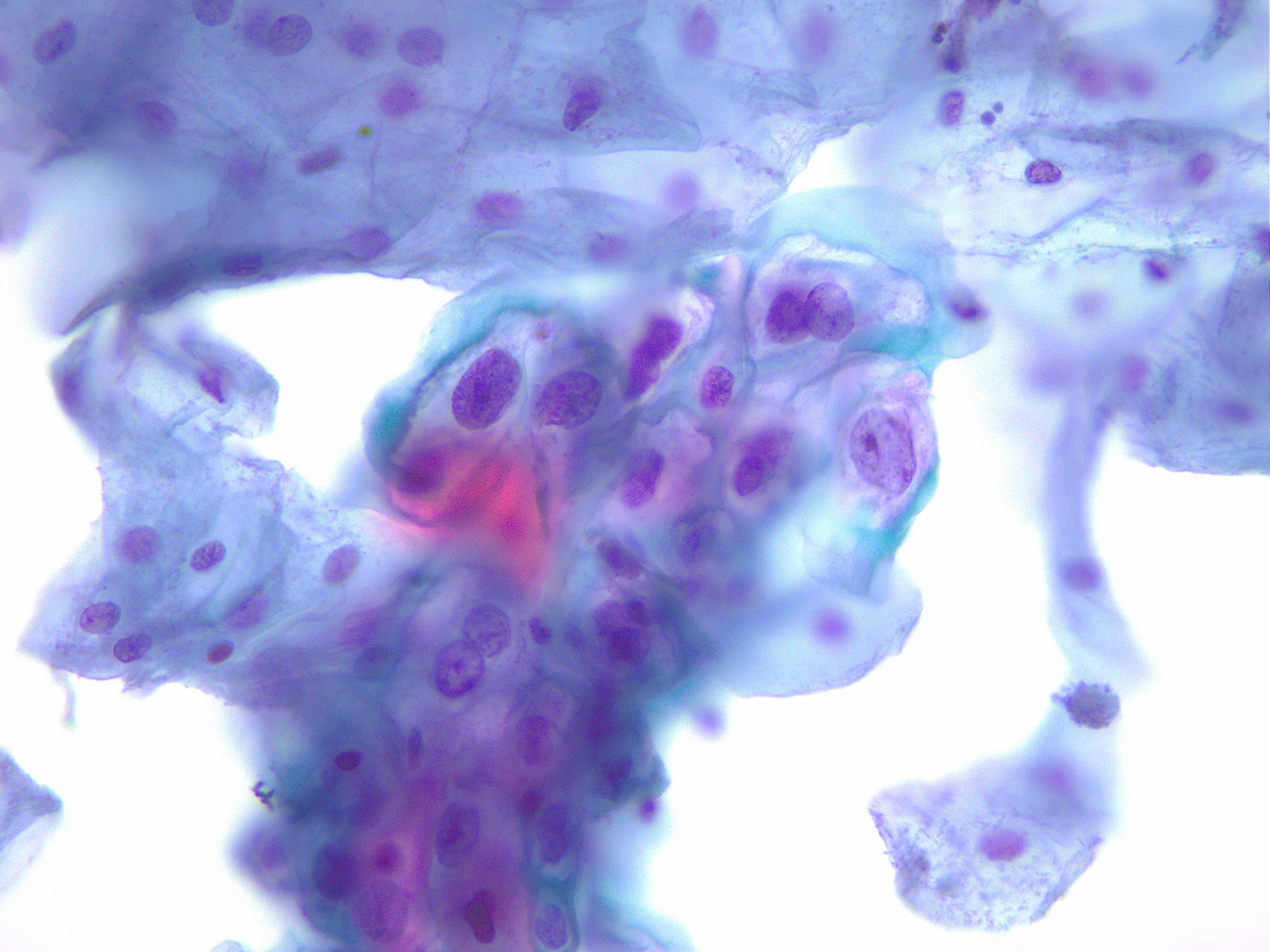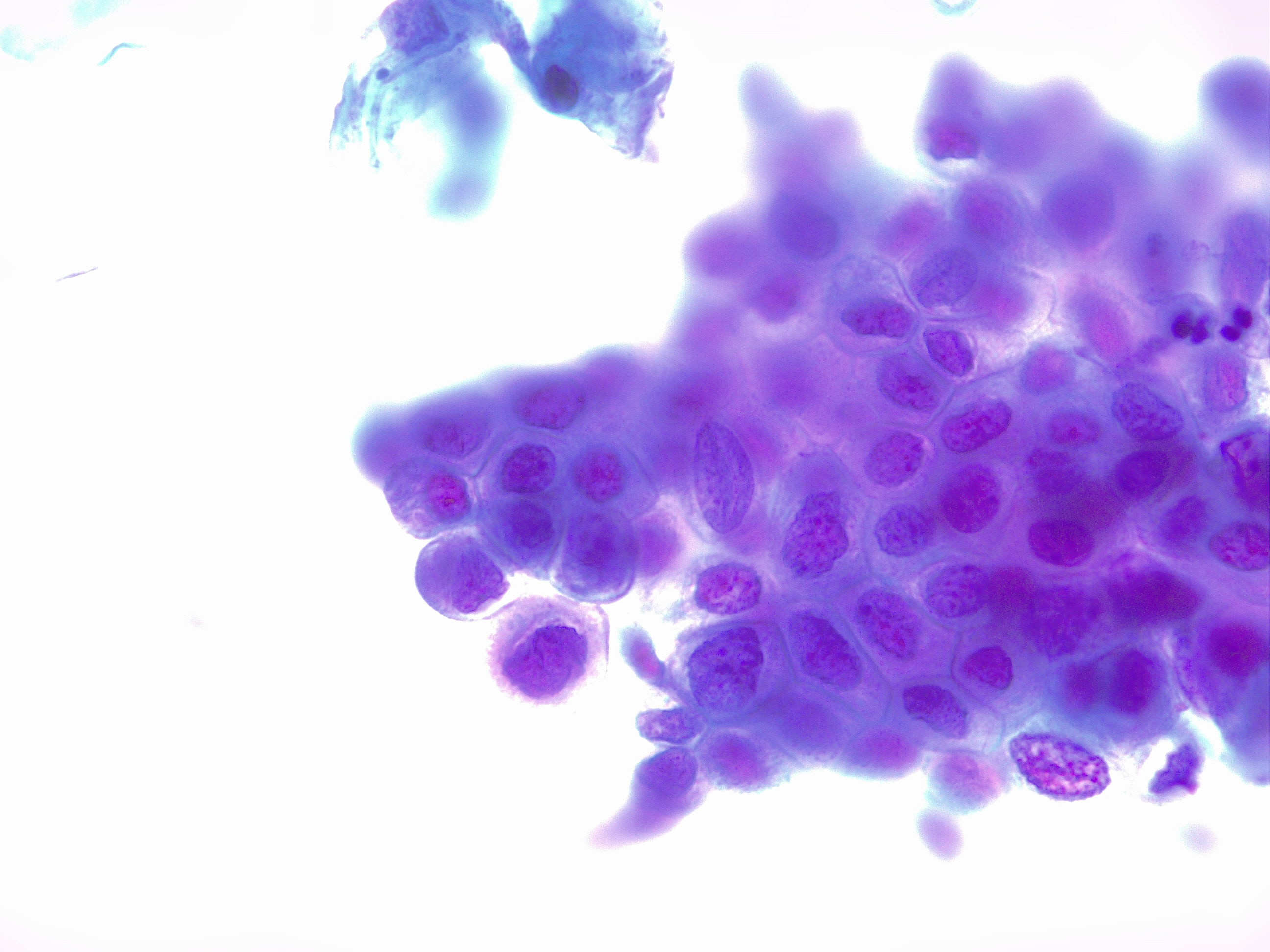[1]
Darragh TM. The LAST Project and the diagnostic bottom line. Cytopathology : official journal of the British Society for Clinical Cytology. 2015 Dec:26(6):343-5. doi: 10.1111/cyt.12299. Epub
[PubMed PMID: 26767600]
[2]
Senapati R, Senapati NN, Dwibedi B. Molecular mechanisms of HPV mediated neoplastic progression. Infectious agents and cancer. 2016:11():59
[PubMed PMID: 27933097]
[3]
Morris BJ, Hankins CA, Banerjee J, Lumbers ER, Mindel A, Klausner JD, Krieger JN. Does Male Circumcision Reduce Women's Risk of Sexually Transmitted Infections, Cervical Cancer, and Associated Conditions? Frontiers in public health. 2019:7():4. doi: 10.3389/fpubh.2019.00004. Epub 2019 Jan 31
[PubMed PMID: 30766863]
[4]
Piróg M, Grabski B, Jach R, Zmaczyński A, Dutsch-Wicherek M, Wróbel A, Stangel-Wójcikiewicz K. Human Papillomavirus Infection: Knowledge, Risk Perceptions and Behaviors among SMW and AFAB. Diagnostics (Basel, Switzerland). 2022 Mar 29:12(4):. doi: 10.3390/diagnostics12040843. Epub 2022 Mar 29
[PubMed PMID: 35453891]
[5]
Brown MA, Leo PJ. Genetic susceptibility to cervical neoplasia. Papillomavirus research (Amsterdam, Netherlands). 2019 Jun:7():132-134. doi: 10.1016/j.pvr.2019.04.002. Epub 2019 Apr 5
[PubMed PMID: 30954690]
[6]
Bahls L, Yamakawa R, Zanão K, Alfieri D, Flauzino T, Delongui F, de Abreu A, Souza R, Gimenes F, Reiche E, Borelli S, Consolaro M. Human Leukocyte Antigen Class I and Class II Polymorphisms and Serum Cytokine Profiles in Cervical Cancer. International journal of molecular sciences. 2017 Aug 31:18(9):. doi: 10.3390/ijms18091478. Epub 2017 Aug 31
[PubMed PMID: 28858203]
[7]
Ades S, Koushik A, Duarte-Franco E, Mansour N, Arseneau J, Provencher D, Gilbert L, Gotlieb W, Ferenczy A, Coutlée F, Roger M, Franco EL, Biomarkers of Cervical Cancer Risk (BCCR) Study Team. Selected class I and class II HLA alleles and haplotypes and risk of high-grade cervical intraepithelial neoplasia. International journal of cancer. 2008 Jun 15:122(12):2820-6. doi: 10.1002/ijc.23459. Epub
[PubMed PMID: 18351579]
[8]
Kjellberg L, Hallmans G, Ahren AM, Johansson R, Bergman F, Wadell G, Angström T, Dillner J. Smoking, diet, pregnancy and oral contraceptive use as risk factors for cervical intra-epithelial neoplasia in relation to human papillomavirus infection. British journal of cancer. 2000 Apr:82(7):1332-8
[PubMed PMID: 10755410]
[9]
Coker AL, Sanders LC, Bond SM, Gerasimova T, Pirisi L. Hormonal and barrier methods of contraception, oncogenic human papillomaviruses, and cervical squamous intraepithelial lesion development. Journal of women's health & gender-based medicine. 2001 Jun:10(5):441-9
[PubMed PMID: 11445043]
[10]
Gadducci A, Cosio S, Fruzzetti F. Estro-progestin Contraceptives and Risk of Cervical Cancer: A Debated Issue. Anticancer research. 2020 Nov:40(11):5995-6002. doi: 10.21873/anticanres.14620. Epub
[PubMed PMID: 33109537]
[11]
Vanajothi R, Srikanth N, Vijayakumar R, Palanisamy M, Bhavaniramya S, Premkumar K. HPV-mediated Cervical Cancer: A Systematic Review on Immunological Basis, Molecular Biology, and Immune Evasion Mechanisms. Current drug targets. 2022:23(8):782-801. doi: 10.2174/1389450123666211221160632. Epub
[PubMed PMID: 34939539]
Level 1 (high-level) evidence
[12]
Solomon D, Davey D, Kurman R, Moriarty A, O'Connor D, Prey M, Raab S, Sherman M, Wilbur D, Wright T Jr, Young N, Forum Group Members, Bethesda 2001 Workshop. The 2001 Bethesda System: terminology for reporting results of cervical cytology. JAMA. 2002 Apr 24:287(16):2114-9
[PubMed PMID: 11966386]
[13]
Horn LC, Reichert A, Oster A, Arndal SF, Trunk MJ, Ridder R, Rassmussen OF, Bjelkenkrantz K, Christiansen P, Eck M, Lorey T, Skovlund VR, Ruediger T, Schneider V, Schmidt D. Immunostaining for p16INK4a used as a conjunctive tool improves interobserver agreement of the histologic diagnosis of cervical intraepithelial neoplasia. The American journal of surgical pathology. 2008 Apr:32(4):502-12. doi: 10.1097/PAS.0b013e31815ac420. Epub
[PubMed PMID: 18223479]
[14]
Zhu Y, Ren C, Yang L, Zhang X, Liu L, Wang Z. Performance of p16/Ki67 immunostaining, HPV E6/E7 mRNA testing, and HPV DNA assay to detect high-grade cervical dysplasia in women with ASCUS. BMC cancer. 2019 Mar 27:19(1):271. doi: 10.1186/s12885-019-5492-9. Epub 2019 Mar 27
[PubMed PMID: 30917784]
[16]
Vercellino GF, Erdemoglu E, Chiantera V, Vasiljeva K, Drechsler I, Cichon G, Schneider A, Böhmer G. Validity of the colposcopic criteria inner border sign, ridge sign, and rag sign for detection of high-grade cervical intraepithelial neoplasia. Obstetrics and gynecology. 2013 Mar:121(3):624-631. doi: 10.1097/AOG.0b013e3182835831. Epub
[PubMed PMID: 23635627]
[17]
Hariprasad R, Mittal S, Basu P. Role of colposcopy in the management of women with abnormal cytology. CytoJournal. 2022:19():40. doi: 10.25259/CMAS_03_15_2021. Epub 2022 Jun 14
[PubMed PMID: 35928528]
[18]
Massad LS, Einstein MH, Huh WK, Katki HA, Kinney WK, Schiffman M, Solomon D, Wentzensen N, Lawson HW, 2012 ASCCP Consensus Guidelines Conference. 2012 updated consensus guidelines for the management of abnormal cervical cancer screening tests and cancer precursors. Obstetrics and gynecology. 2013 Apr:121(4):829-846. doi: 10.1097/AOG.0b013e3182883a34. Epub
[PubMed PMID: 23635684]
Level 3 (low-level) evidence
[19]
Bentley J, EXECUTIVE COUNCIL OF THE SOCIETY OF CANADIAN COLPOSCOPISTS, SPECIAL CONTRIBUTORS. Colposcopic management of abnormal cervical cytology and histology. Journal of obstetrics and gynaecology Canada : JOGC = Journal d'obstetrique et gynecologie du Canada : JOGC. 2012 Dec:34(12):1188-1202. doi: 10.1016/S1701-2163(16)35468-8. Epub
[PubMed PMID: 23231803]
[20]
Smith RA, Andrews KS, Brooks D, Fedewa SA, Manassaram-Baptiste D, Saslow D, Wender RC. Cancer screening in the United States, 2019: A review of current American Cancer Society guidelines and current issues in cancer screening. CA: a cancer journal for clinicians. 2019 May:69(3):184-210. doi: 10.3322/caac.21557. Epub 2019 Mar 15
[PubMed PMID: 30875085]
[21]
Perkins RB, Guido RS, Castle PE, Chelmow D, Einstein MH, Garcia F, Huh WK, Kim JJ, Moscicki AB, Nayar R, Saraiya M, Sawaya GF, Wentzensen N, Schiffman M, 2019 ASCCP Risk-Based Management Consensus Guidelines Committee. 2019 ASCCP Risk-Based Management Consensus Guidelines for Abnormal Cervical Cancer Screening Tests and Cancer Precursors. Journal of lower genital tract disease. 2020 Apr:24(2):102-131. doi: 10.1097/LGT.0000000000000525. Epub
[PubMed PMID: 32243307]
Level 3 (low-level) evidence
[22]
. 2019 ASCCP Risk-Based Management Consensus Guidelines for Abnormal Cervical Cancer Screening Tests and Cancer Precursors: Erratum. Journal of lower genital tract disease. 2020 Oct:24(4):427. doi: 10.1097/LGT.0000000000000563. Epub
[PubMed PMID: 32732649]
Level 3 (low-level) evidence
[23]
Kops NL, Hohenberger GF, Bessel M, Correia Horvath JD, Domingues C, Kalume Maranhão AG, Alves de Souza FM, Benzaken A, Pereira GF, Wendland EM. Knowledge about HPV and vaccination among young adult men and women: Results of a national survey. Papillomavirus research (Amsterdam, Netherlands). 2019 Jun:7():123-128. doi: 10.1016/j.pvr.2019.03.003. Epub 2019 Mar 16
[PubMed PMID: 30885798]
Level 3 (low-level) evidence


